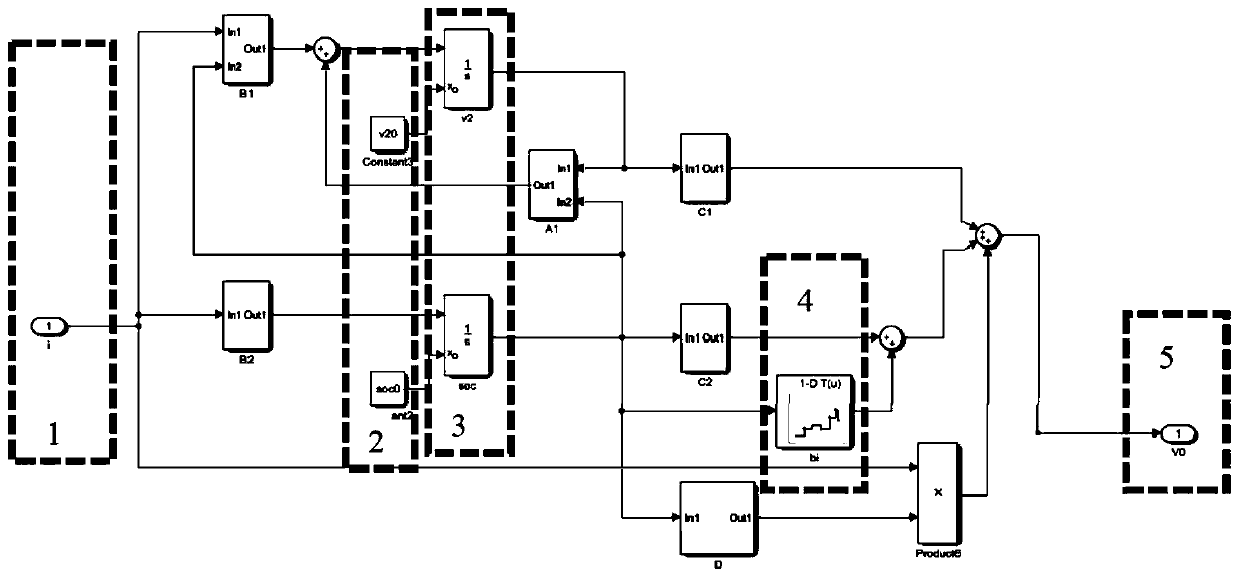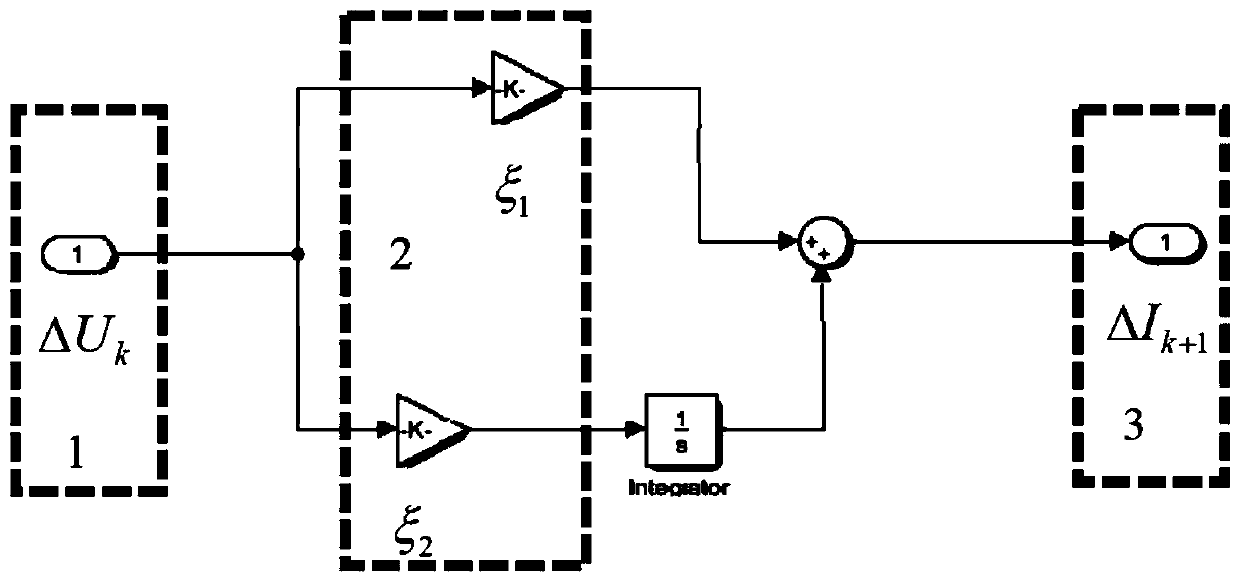A method for online estimation of the maximum allowable power of lithium-ion batteries
A lithium-ion battery, the maximum allowable technology, applied in the direction of measuring electricity, measuring electrical variables, instruments, etc., can solve the problems of difficult to guarantee accuracy, unified description, etc., to achieve the effect of ensuring accuracy
- Summary
- Abstract
- Description
- Claims
- Application Information
AI Technical Summary
Problems solved by technology
Method used
Image
Examples
example 1
[0033] Example 1: Select current SOC=14%, U 2 = 0V as the initial value of the state variable, calculate the maximum charging power at this time, take the maximum transient charging current (75A) as the initial value of the test current, use the simulink model of the first-order equivalent circuit of the battery built, and calculate the continuous excitation of the test charge current for 10s After the terminal voltage of the battery n is the maximum number of iterations).
[0034] simulink models such as figure 2 As shown, it includes: input module 1 is used to provide real-time input current, constant module 2 is used to set the voltage U at both ends of the RC circuit respectively 2 and the initial value of the state of charge SOC, the integrator module 3 is used to calculate the voltage U across the RC circuit 2 and state of charge SOC. Auxiliary calculation module 4, used for auxiliary calculation of the measurement equation of the battery model, representing b i ....
example 2
[0038] Example 2: Select current SOC=14%, U 2 = 0V as the initial value of the state variable, calculate the maximum discharge power at this time, take the maximum transient discharge current (-75A) as the initial value of the test discharge current, use the simulink model of the first-order equivalent circuit of the battery built, and calculate the duration of the test discharge current The terminal voltage of the battery after excitation for 10s n is the maximum number of iterations);
[0039] 1) Judging the difference between the terminal voltage obtained at this time and the discharge limiting voltage 3.0V, If the difference is greater than zero, proceed to the next step;
[0040] 2) Judging the voltage difference Is it less than the iteration accuracy ε=0.05mV, the voltage difference If it is not satisfied that it is less than the iteration accuracy ε=0.05mV, proceed to the next step;
[0041] 3) The voltage difference Enter the observer, which is determined by...
example 3
[0046] Example 3: With current SOC=80%, U 2 = 0 as the initial value of the state variable, calculate the maximum charging power at this time, take the maximum transient charging current (75A) as the initial value of the test current, use the simulink model of the first-order equivalent circuit of the battery built, and calculate the continuous excitation of the test charge current for 10s After the terminal voltage of the battery n is the maximum number of iterations);
[0047] 1) Judging the difference between the terminal voltage obtained at this time and the charging limit voltage of 4.2V, If the difference is greater than zero, proceed to the next step;
[0048] 2) Judging the voltage difference Is it less than the iteration accuracy ε=0.05mV, the voltage difference If it is not satisfied that it is less than the iteration accuracy ε=0.05mV, proceed to the next step;
[0049] 3) The voltage difference Enter the observer, which is determined by the observer acco...
PUM
 Login to View More
Login to View More Abstract
Description
Claims
Application Information
 Login to View More
Login to View More - R&D
- Intellectual Property
- Life Sciences
- Materials
- Tech Scout
- Unparalleled Data Quality
- Higher Quality Content
- 60% Fewer Hallucinations
Browse by: Latest US Patents, China's latest patents, Technical Efficacy Thesaurus, Application Domain, Technology Topic, Popular Technical Reports.
© 2025 PatSnap. All rights reserved.Legal|Privacy policy|Modern Slavery Act Transparency Statement|Sitemap|About US| Contact US: help@patsnap.com



